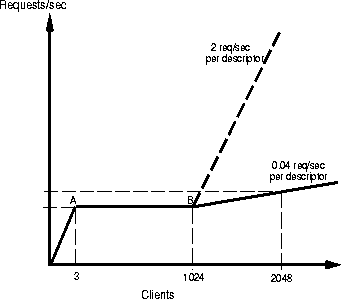
Figure 2: Request Rate versus no. of Clients

In the World Wide Web, HTTP requests are generated by a huge number of clients, where each client has a think time distribution with large mean and variance. Furthermore, the think time of clients is not independent; factors such as human user's sleep/wake patterns, and the publication of Web content at scheduled times causes high correlation of client HTTP requests. As a result, HTTP request traffic arriving at a server is bursty with the burstiness being observable at several scales of observation [8], and with peak rates exceeding the average rate by factors of 8 to 10 [15, 27]. Furthermore, peak request rates can easily exceed the capacity of the server.
By contrast, in the simple request generation method, a small number of clients have independent think time distributions with small mean and variance. As a result, the generated traffic has little burstiness. The simple method generates a new request only after a previous request is completed. This, combined with the fact that only a limited number of clients can be supported in a small testbed, implies that the clients stay essentially in lockstep with the server. That is, the rate of generated requests never exceeds the capacity of the server.

Figure 2: Request Rate versus no. of Clients
Consider a Web server that is subjected to HTTP requests from an increasing number of clients in a testbed using the simple method. For simplicity, assume that the clients use a constant think time of zero seconds, i.e., they issue a new request immediately after the previous request is completed. For small document retrievals, a small number of clients (3-5 for our test system) are sufficient to drive the server at full capacity. If additional clients are added to the system, the only effect is that the accept queue at the server will grow in size, thereby adding queuing delay between the instant when a client sees a connection as established, and the time at which the server accepts the connection and handles the request. This queuing delay reduces the rate at which an individual client issues requests. Since each client waits for a pending transaction to finish before initiating a new request, the net connection request rate of all the clients remains equal to the throughput of the server.
As we add still more clients, the server's accept queue eventually fills. At that point, the server TCP starts to drop connection establishment requests that arrive while the sum of the SYN-RCVD and accept queues is at its limit. When this happens, the clients whose connection requests are dropped go into TCP's exponential backoff and generate further requests at a very low rate. (For 4.4BSD based systems this is 3 requests in 75 seconds.) The behavior is depicted in Figure 2. The server saturates at point A, and then the request rate remains equal to the throughput of the server until the accept queue fills up (point B). Thereafter the rate increases as in the solid line at 0.04 requests/second per added client.
To generate a significant rate of requests beyond the capacity of the
server, one would have to employ a huge number of client
processes. Suppose that for a certain size of requested file, the
capacity of a server is 100 connections/sec, and we want to generate
requests at 1100 requests/sec. One would need on the order of 15000
client processes ((1100 - 100)/(3/75)) beyond a number equal to the
maximum size of the listen socket's accept queue to achieve this
request rate. Recall from Section 2 that many vendors now
configure their systems with a large value of somaxconn to avoid
dropping incoming TCP connections needlessly. Thus, with
somaxconn = 32767, we need 64151 processes ( ![]() ) to
generate 1100 requests/sec. Efficiently supporting such large numbers
of client processes on a small number of client machines is not
feasible.
) to
generate 1100 requests/sec. Efficiently supporting such large numbers
of client processes on a small number of client machines is not
feasible.
A real Web server, on the other hand, can easily be overloaded by the huge (practically infinite) client population existing on the Internet. As mentioned above, it is not at all unusual for a server to receive bursts of requests at rates that exceed the average rate by factors of 8 to 10. The effect of such bursts is to temporarily overload the server. It is important to evaluate Web server performance under overload. For instance, it is a well known fact that many Unix and non-Unix based network subsystems suffer from poor overload behavior [11, 19]. Under heavy network load these interrupt-driven systems can enter a state called receiver-livelock[22]. In this state, the system spends all its resources processing incoming network packets (in this case TCP SYN packets), only to discard them later because there is no CPU time left to service the receiving application programs (in this case the Web server).
Synthetic requests generated using the simple method cannot reproduce the bursty aspect of real traffic, and therefore fail to evaluate the behavior of Web servers under overload.